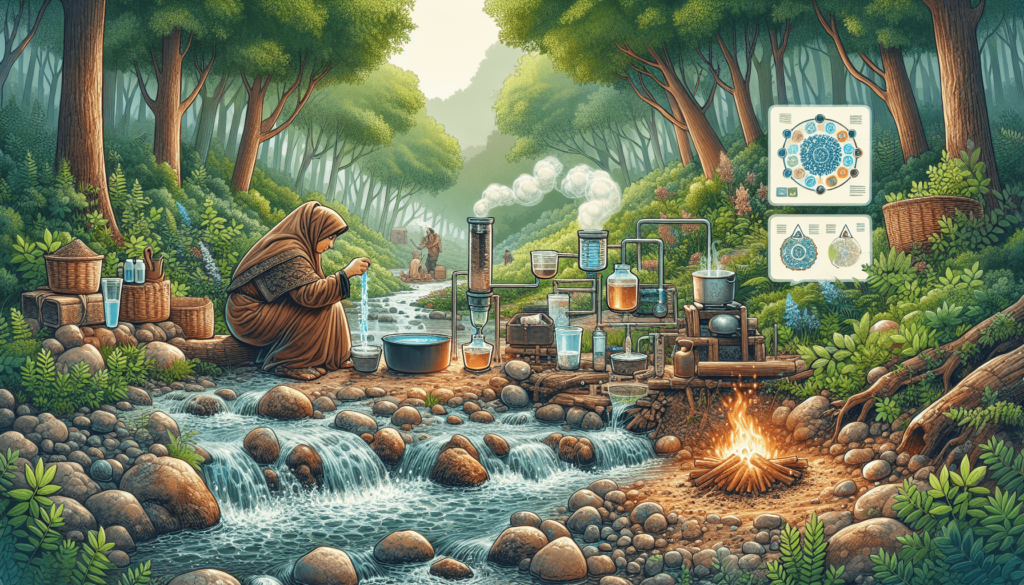Imagine embarking on a self-sufficient adventure in the wilderness, where you and your family live off the grid and learn how to purify wilderness water. Your backyard becomes a bountiful survival garden, brimming with fresh produce. You learn to identify wild plants for sustenance, all while being cautious of poisonous imposters. You’re prepared to care for your pets during emergencies, with DIY projects like homemade water filters and solar power systems ensuring self-reliance. Even the youngest explorers in your family get involved, mastering basic survival skills like building shelters and starting fires without matches. This journey into off-grid living is all about embracing self-reliance, connecting with nature, and empowering you and your loved ones with valuable skills. So, are you ready to discover the empowering freedom that comes with knowing how to thrive in the wild?
Step 1: Collecting Water
When you find yourself in a wilderness setting, the first step to ensuring a safe water source is to identify a water source. Look for natural water sources such as rivers, streams, or lakes. However, it is important to be cautious and avoid drinking water from stagnant sources, as they are more likely to be contaminated.
Once you have identified a water source, it is crucial to choose the right container for collecting the water. Opt for containers made from food-grade materials such as stainless steel or BPA-free plastic. Make sure the container is large enough to hold an ample amount of water for your needs.
To prevent contamination of the collected water, it is essential to take careful steps. Avoid directly touching the inside of the container where the water will be collected. Use clean hands or gloves to handle the container and prevent any potential contamination from your fingertips.
Step 2: Filtering Water
In order to remove impurities and ensure safe drinking water, filtering is an important step. Choosing a portable water filter is crucial for this process. Look for filters that are specifically designed for wilderness use and capable of filtering out bacteria, protozoa, and other harmful contaminants. These filters often come in the form of lightweight and compact units, making them a convenient tool to include in your wilderness survival kit.
Once you have chosen a suitable water filter, it is essential to set it up correctly. Follow the manufacturer’s instructions carefully to assemble and install the filter. Pay attention to any specific requirements or guidelines provided by the manufacturer to ensure optimal performance and effectiveness.
Remember to follow the manufacturer’s instructions when using the water filter. Some filters may require you to backflush or clean the filter periodically to maintain its functionality. Pay attention to any maintenance recommendations and keep the filter in good condition for future use.

Step 3: Filtering Water
While filtering water helps remove many contaminants, it is important to take an extra step to ensure its safety. There are several methods you can use to treat water in a wilderness setting.
Boiling the water is a traditional and effective method of water treatment. Heat the water to its boiling point and let it boil for at least one minute to kill any potential pathogens. Allow the water to cool before drinking or storing it.
Another option is using water purification tablets. These tablets often contain chemicals such as chlorine or iodine that can effectively kill bacteria, viruses, and protozoa. Follow the instructions provided on the tablet packaging for proper usage and dosage.
using a UV water purifier is another convenient and effective method of treating water. These devices use ultraviolet light to kill harmful microorganisms. Simply immerse the purifier in the water and activate it according to the manufacturer’s instructions. The UV light will neutralize any pathogens present in the water, making it safe to drink.
Additional Tips and Considerations
While collecting and treating water in the wilderness, there are some additional tips and considerations to keep in mind.
First, it is important to avoid drinking water from stagnant sources. Stagnant water is more likely to be contaminated and may contain harmful bacteria or parasites. Stick to flowing water sources such as rivers or streams whenever possible.
Additionally, it can be beneficial to learn to identify edible wild plants for hydration. Familiarizing yourself with edible plants that can provide water can be useful in emergency situations when other water sources may not be available.
Lastly, it is crucial to understand the risks associated with certain water sources. Some bodies of water, such as those contaminated with industrial waste or agricultural run-off, may pose a higher risk of contamination. Research and be cautious when collecting water from unfamiliar sources to ensure your safety.

Conclusion
When venturing into the wilderness, ensuring a safe and clean water source is of utmost importance. By following these three simple steps of collecting, filtering, and treating water, you can minimize the risk of waterborne illnesses and enjoy safe hydration in your off-grid adventures. Remember to choose suitable containers, use portable water filters, and follow proper water treatment methods to ensure the water you consume is clean and safe. Stay prepared, stay hydrated, and embrace the empowering freedom of off-grid living by purifying wilderness water!

